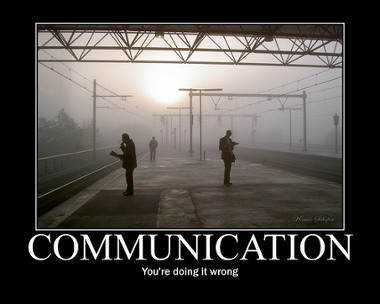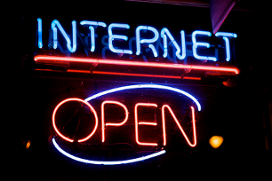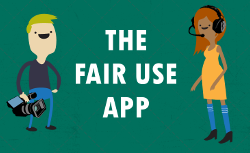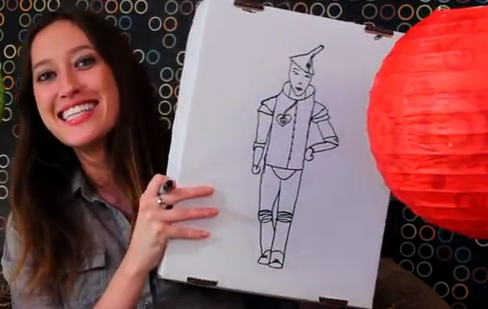New Media Rights and UCAN's Comments in response to the FCC Notice of Inquiry concerning the Framework for Broadband Internet Services. To see other filings in this proceeding visit the FCC proceeding page and search for GN Docket No. 10-127.
Before the Federal Communications Commission
Washington, D.C. 20554. Do
In the Matter of Framework for Broadband Internet Service, Notice of Inquiry
GN Docket No. 10-127,
FCC 10-114
COMMENTS OF NEW MEDIA RIGHTS AND
UTILITY CONSUMERS’ ACTION NETWORK
Art Neill & Mike Scott
New Media Rights / Utility Consumers’ Action Network
3100 Fifth Ave Suite B
San Diego, CA 92101
(619) 696-6966
Table of Contents
I. INTRODUCTION 1
II. ABOUT THE COMMENTERS 2
III. DISCUSSION 2
A. Observations regarding content level regulation, its affect on the “generative” nature of the internet, as well as the affect of any regulation on copyright law 2
B. Classification of terrestrial wireless broadband services and its impact on Consumer Protection. 8
C. Legal and Procedural Considerations Regarding the “Third Way” 12
IV. CONCLUSION 17
I. INTRODUCTION
New Media Rights and Utility Consumers’ Action Network hereby submit comments (Commenters will be referred to from here forth as “NMR”) to the Notice of Inquiry (NOI) released June 17, 2010 regarding the proposed frameworks for broadband Internet service.
This inquiry into the framework for broadband internet regulation can have a critical impact on our nation’s media and communications future. Any such inquiry should be approached with caution, and should be conducted as openly as possible with an emphasis on soliciting input from the diverse interests of the American public. In the face of the recent Comcast decision correctly questioning the Commission’s tenuous reliance on its ancillary, title I jurisdiction to regulate the internet, the Commission is right to consider what, if any, jurisdiction Congress as allowed it to exercise over broadband internet. If the Commission proceeds to reclassify broadband internet under title II, there are numerous implications for consumer protection as well as the future of the internet as a communications technology.
NMR’s comments draw upon Utility Consumers’ Action Network and New Media Rights’ experience advocating for consumers of broadband internet, as well as in advocating for and defending the rights of diverse creators and speakers who depend on an open and innovative internet. The FCC has a particular challenge in balancing the need for basic consumer protections with the need to avoid regulatory overreach to ensure an open and free internet.
The NOI raises an array of inquiries, and NMR will provide comments on the following inquiries:
Discussion of concerns regarding content level regulation and its affect on the generativity of the internet as well as copyright regulation.
Classification of terrestrial wireless broadband services and its impact on Consumer Protection.
Legal and Procedural Considerations Regarding the “Third Way”
II. ABOUT THE COMMENTERS
New Media Rights – NewMediaRights.org
New Media Rights is a free alternative source for expertise on media law and the development of local journalism and artistic expression using new (Internet-based) media. It provides pro bono legal resources and its free media studio to creators - artists, filmmakers, podcasters, citizen journalists, bloggers, open source software projects, as well as nonprofits.
Utility Consumers Action Network – UCAN.org
Founded in 1983 by concerned San Diego citizens, the Utility Consumers' Action Network, UCAN, was formed to protect consumers from utility and corporate abuse. Since that time, UCAN's not-for-profit legal team has saved San Diego consumers billions of dollars in unfair utility rate hikes. UCAN brings legal actions, advocates policy initiatives, educates, and guards against corporate abuses in the energy, landline and wireless phone, internet, and gasoline industries, among many other areas.
III. DISCUSSION
A. Observations regarding content level regulation, its affect on the “generative” nature of the internet, as well as the affect of regulation on copyright law.
In its NOI, the Commission states that
“…we do not intend to address in this proceeding the classification of information services such as e-mail hosting, web-based content and applications, voicemail, interactive menu services, video conferencing, cloud computing, or any other offering aside from broadband Internet service… In short, the Commission proposes not to change its treatment of services that fall outside a commonsense definition of broadband Internet service. We seek comment on whether any of the three legal approaches described in this Notice would affect these services directly or indirectly, and how we should factor that into our decision-making about the treatment of broadband Internet service.”
Despite the Commission’s commitment “not to change its treatment of services that fall outside a commonsense definition of broadband Internet service,” the affect of fashioning a regulatory framework on different layers of the internet, including content and applications, will be the paramount concern throughout this process. Regulation of the underlying internet connection necessarily affects the nature of the internet at all levels.
For any regulatory inquiry, it will be important for the Commission to understand and aim to protect the underlying features which have made the internet so successful as a communications medium. The internet’s success has been well summarized by Professor Jonathan Zittrain in his book entitled “The Future of the Internet, and How to Stop It”, where he describes the internet as a “generative” system with features that NMR now encourages the Commission to keep paramount in developing its legal framework for broadband.
These features include leverage, adaptability, ease of mastery, accessibility, and transferability . The internet, similarly to the personal computer, is unprecedented in the variety of tasks the system can be used for, and “the more a system can do, the more capable it is of producing change.” The internet, particularly as provided through a personal computer, is particularly adaptable to a variety of tasks as the user sees fit, from cloud computing, to web based applications, to email and voice applications. The internet has lowered barriers to sharing creativity and speech with the world, and a user with a personal computer and access to the internet today needs to know very little about the underlying technology and network infrastructure to participate in the communications medium in significant ways (starting a blog, sharing videos, starting a business). Similarly, application developers, as well as new businesses and organizations, can arise on the internet with few barriers to entry. Lastly, the internet allows collaboration by a diverse array of users, and the benefits of these collaborations can be shared with anyone connected to the internet. The legal framework for broadband needs to respect the benefits of disruptive change from a technology that is as flexible and accessible as the Internet. There are real benefits from users loosely engaging in noncommercial activity that would otherwise not be achieved.
The internet’s strength as a system is rooted in its ability to use a middle layer of protocol to facilitate seamless communication of a diverse set of applications and content at the top layer of the system through a varied and diverse bottom layer that includes the underlying network, various infrastructures, and a variety of delivery devices and methods.
Essentially, the more accessible the internet has become to a broader user base, the more innovation and productive adaptations we have seen. The Commission’s efforts should recognize the foundational components of an open, free, and “generative” internet, and be diligent throughout this process to respect and protect those components in the resulting regulatory framework.
The affect of a new regulatory framework on copyright law
In the Commission’s Net Neutrality proceeding, begun in the fall of 2009, a number of public interest groups warned about potential copyright loopholes for internet access providers. The concerns at the time revolved particularly around proposals to include efforts to police copyright as specific exceptions to anti-discrimination rules. Despite the inapplicability of the network management principles in instances where “unlawful content” was involved, some commenters proposed further, specific exceptions that appeared to allow internet access providers to engage in discrimination of content for copyright policing purposes, cloaked under the title of “reasonable network management.”
As the EFF stated in its comments January 14, 2010, these exceptions pose dangerous limitations for a free and open internet.
“Because the proposed regulations by their terms do not protect “unlawful
content,” there is no need for an exception to permit ISPs to block such content.
Any copyright enforcement exception to the six principles simply serves to
excuse ISPs from using undisclosed, overbroad techniques that interfere with
lawful activities, as long as they claim they were attempting to restrict unlawful
ones. This “copyright loophole” has profound implications for the free speech
rights of Internet users and cannot be reconciled with the stated purposes of the
NPRM.”
The dangers raised in the various comments cited above are still very real concerns for end users of the internet as the Commission undertakes development of this legal framework. Internet access providers already collaborate with content owners to police copyright holders’ interests in an extra-judicial, outside of the courtroom process. Users routinely receive letters from internet access providers threatening suspension for perceived user behavior and use of particular technologies such as peer to peer filesharing software. While this policing may result in some reduction in actual illegal filesharing, it also necessarily includes false positives, users whose activities, while objectionable to the copyright holder, are not otherwise illegal. For instance, this policing disregards the built in protections of fair use in American copyright law under section 107 of the Copyright Act. It is an example of internet access providers and copyright owners shaping the future of our internet by encouraging and discouraging certain content and applications. As was proved in the early 1980’s with the VCR, when copyright owners derided the VCR as the end of the movie business, it is hard to predict the development of certain technologies, and internet access providers and copyright owners should not be enabled to engage in discrimination of various content and applications under the auspices of copyright enforcement.
The Commission must be ready to confront additional proposed loopholes as it continues to find footing for its prohibitions on discrimination. Any efforts to block, discriminate, or interfere with certain speech by internet access providers should not be provided a loophole as “reasonable network management or otherwise.
Defining “Internet Connectivity”
In paragraph 64 the Commission requests input regarding its approach to defining “internet connectivity.” Certainly such a definition can have a profound effect on the way the legal framework operates; particularly to the extent it allows individual internet access providers room to establish their own rules within the larger regulatory framework.
One downside of excessive specificity when regulating technology is that any rule made today can quickly become difficult to apply, and easily circumvented not far in the future. That said, the Commission should define the functionality, characteristics, and limits of the term "internet connectivity" rather than leaving it to internet access providers to define their own telecommunications services. It is important that the Commission define "internet connectivity" narrowly in order to prevent service providers from adopting an overbroad definition that could encompass anything from the network wires to applications that deliver content.
In order to remain consistent with the FCC's stated mission to protect and empower consumers, it is imperative that the Commission adopt a narrow definition of "internet connectivity" that will limit the term to the pipe role that service providers embody. If providers are given too much latitude to define the term on their own, they are given too much potential control over the content and information that consumers receive on the Internet.
The FCC should also define the term "internet connectivity" for reasons of consistency. Each service provider may adopt a different definition of their own if the Commission fails to properly define the term. Varied definitions will lead to confusion and cause frustration for consumers as well as unfair results in the marketplace. The Commission needs to promulgate a definition of "internet connectivity" that is limited to the role that all service providers have in common- the pipeline connection to the internet.
B. Classification of terrestrial wireless broadband services and its impact on Consumer Protection.
The Commission seeks comment on which of the three legal frameworks, or what alternative framework would best support the Commission’s policy goals for wireless broadband. The Commission asks specific questions as to how wireless Internet services are purchased, provided, and perceived; the extent to which Section 332 of the Communications Act should affect the classification of wireless broadband Internet services; whether sections 201 and 202 should be applied differently to wireless and wired broadband Internet services , and whether the Commission should address changes to wired and wireless broadband Internet services at the same time. Below NMR’s comments specifically address how wireless broadband Internet is purchased, provided, and perceived and the impact that has on the application of section 332, 201 and 202 to wireless broadband Internet services. NMR’s comments focus on Mobile wireless broadband Internet services, and particularly draws Utility Consumers’ Action Network’s experience in advocating for broadband consumers.
Consumers may generally purchase mobile wireless broadband Internet service in one of two forms, as a stand-alone service or as an integrated service associated with the purchase of a consumer mobile radio service. Notably, if a consumer purchases a smartphone from one of the four largest telecommunications service carriers; they are required to pay a monthly fee for mobile broadband Internet access on the smartphone device. The carriers currently do not allow consumers to utilize a smartphone solely on their voice network.
Stand-alone services require the purchase of a USB broadband modem, carriers typically place a data cap on the service, but rather than charge consumers extra for hitting the limit, carriers degrade speed for the rest of the monthly service period. Depending upon the carrier, this service may include the ability to send and receive text messages, a service which is traditionally offered by commercial mobile radio service providers. When consumers purchase these stand-alone mobile wireless services they are assigned a telephone number in addition to an account number. When consumers receive their monthly bill, the bill is formatted in the manner and style as the carrier’s bill for voice services. If a carrier has wireless voice services in addition to mobile wireless broadband service from the same carrier, the carrier bills the consumer for all the services in one bill. When consumers have complaints about mobile broadband wireless services they are also calling the same customer service department as the commercial mobile radio services customers. This overlap makes it very difficult for consumers to know and understand whether basic Title II consumer protections are available.
This consumer confusion is compounded with the manner in which mobile wireless broadband service is provided to consumers who purchase smartphones. Consumers are now using the same device they use to complete voice calls to access the Internet. Some of these devices even allow consumers the option to complete voice calls over the carriers’ voice network, the carriers’ broadband network, or an available Wi-Fi network . Consumers, however, do not get to choose which network they pay for access to, but rather must pay for access to the carrier’s voice network and broadband network if they purchase a smartphone. Access to the voice and mobile broadband services are purchased in one transaction, consumers are charged for all services on one bill, and the company contact information does not vary. The combined services are advertised, sold, and perceived essentially as one service.
The perception of mobile wireless broadband service is one reason why mobile wireless broadband services should be classified as a commercial mobile service and subject to the same regulatory requirements as current commercial mobile services such as wireless phone service. In applying section 332 to mobile wireless broadband services the Commission should consider whether it would be best to reclassify the services as a telecommunications service. This consideration should occur at the same time that the Commission is considering whether to reclassify wired broadband services as telecommunications services. The Commission should maintain its practice of using a consistent framework for classification of Internet services and continue to provide regulatory certainty. Delay will create confusion and further prevent consumers from receiving adequate consumer protections.
Consumer Protection
When the Commission queries whether section 201 and 202 should be treated separately for wired and wireless broadband Internet services , it encompasses the broader question whether broadband Internet services should be reclassified. While both statutory sections are important to NMR, commenter’s parent consumer advocacy organization, has particular experience with consumer protection benefits that section 201 provides and the difficulty that arises when that statutory protection is not available to consumers despite the improper appearance of mobile wireless broadband Internet services as telecommunications services. The consumer experience detailed below shows the importance of providing consumer protections particular when consumers may be unaware of the nuanced difference between information services and telecommunications services. In helping the consumer resolve this issue, UCAN found that the Provider was willing to credit the consumer for the billing mistake, but was unwilling to create a fix in their billing system to prevent the improper charging of these services. Due to the Providers resistance to implementing a system fix and the likelihood that many, if not all, of the Provider’s mobile wireless Internet service customers were experiencing the same billing errors as the known consumer, UCAN and the consumer filed a federal class action lawsuit against the Provider.
In the complaint, UCAN and the consumer alleged that, by imposing various taxes and surcharges on information services subscribers that should have only been imposed on telecommunications service subscribers, Provider violated Section 201(b). UCAN argued that it would be inequitable to allow Provider to act like a ‘common carrier’ and impose charges that could only be charged for telecommunications services, yet not hold Provider liable under the FCA and require the mobile wireless broadband provider to refund any unjust and unreasonable charges. In raising this argument, UCAN was not attempting to challenge the FCC’s (then recent) determination that wireless broadband Internet service was an information service , rather UCAN was posing an alternative argument that it deemed appropriate to raise given the Provider was treating its mobile wireless Internet service as a telecommunications service. The Provider’s conduct created enough uncertainty that it was not clear that the Provider would not claim its mobile wireless Internet services were telecommunications service and thus argue it was entitled to collect the charges taxes, fees, and surcharges it had assessed the consumer.
The case has since been settled, but it highlights how confusing the difference between information services and telecommunications services is to end-users. In categorizing and billing for the services, Providers create so little difference that consumers rarely know whether charges are being assessed for all services or just the telecommunications services and often perceive what are suppose to be distinct services, as one complete service. Consumers only discover the difference between information services and telecommunications services when attempting to correct improper charges or protect other rights. In those instances, telecommunications services consumers discover they have certain statutory and regulatory protections under the FCA, while information services consumers discover they have virtually no protections under the FCA.
C. Legal and Procedural Considerations Regarding the “Third Way”
The FCC identifies and requests comments regarding its “third way” proposal involving reclassification of broadband Internet as a Title II regulated service, while simultaneously forbearing from certain requirements of Title II as follows:
“We identify and seek comment on a third option for establishing a suitable legal foundation for broadband Internet and Internet connectivity services. This third way would involve classifying wired broadband Internet connectivity as a telecommunications service (as suggested above), but simultaneously forbearing from applying most requirements of Title II to that connectivity service, save for a small number of provisions.”
NMR offers the following initial comments regarding the third way.
The Supreme Court in Brand X places classification changes within the FCC’s authority to make unilaterally
NMR is concerned with the unknown ramifications of FCC Title II regulation. That said, the recent decision in Comcast correctly questioned the Commission’s authority to regulate under its title I ancillary authority. The Commission should always make paramount the consideration of whether or not Congress has delegated to it the authority to regulate in a specific area. NMR agrees with Mr. Austin Schlick’s analysis that the Supreme Court in Brand X, interpreting Chevron, places classification changes within the FCC’s authority to make unilaterally without authorization from Congress.
Keeping that in mind, NMR believes that the critics of the third way and reclassification in general will be vocal in their opposition and have colorable arguments against the FCC’s ability to reclassify. AT&T Senior Executive Vice President Jim Cicconi sums up their principle argument opposing reclassification: “When [the FCC] regulates the networks that comprise the Internet, [it] is in fact, and for the first time, regulating the Internet itself… [I]t is directly contrary to Congress's stated intentions, and is being done without any compelling evidence that would justify a reversal of the FCC's prior decisions on this issue.”
“Verizon Executive Vice President Tom Tauke said the proposal raises significant concerns. ‘In enacting the 1996 Telecommunications Act, Congress intentionally excluded Internet services, like broadband Internet access, from the scope of Title II's regulatory burdens,’” Moreover, Time Warner Cable says that reclassification “could create regulatory uncertainty that could dampen investment and innovation and ultimately, damage the consumer experience,”
Congress gave the FCC authority and responsibility to “forbear” from applying telecommunications regulation, so that new services are not subject to needlessly burdensome regulations in section 10 of the Communications Act
In section 10 of the Communications Act (47 U.S.C. 160) Congress requires that the FCC “shall” forebear from applying any regulation or any provision of the Act in some/any geographic market, if the Commission determines that--
(1) enforcement of such regulation or provision is not necessary to ensure that the charges, practices, classifications, or regulations by, for, or in connection with that telecommunications carrier or telecommunications service are just and reasonable and are not unjustly or unreasonably discriminatory;
(2) enforcement of such regulation or provision is not necessary for the protection of consumers; and
(3) forbearance from applying such provision or regulation is consistent with the public interest.
All three scenarios could apply in the context imposing Title II requirements to regulate broadband Internet providers. Therefore, in determining which parts of Title II to forebear, Congress makes it clear that the Commission shall not adopt any portion of Title II when enforcement isn’t necessary to ensure practices are non-discriminatory, when enforcement isn’t necessary to protect consumers, or when forbearance is in the public interest.
Industry rightly fears that an unrestrained third way approach could “cast the kind of regulatory cloud that would chill investment and innovation by ISPs,” The FCC should keep in mind that legally, it must forebear when it could create additional speed bumps to market entry by new content publishers, broadband connectivity providers, and other intermediary technological innovators.
NMR and other consumer interest groups argue that the FCC should view its power to regulate narrowly. Its decisions should be focused enough that it avoids favoring certain content, applications, and technologies.
If the Commission does decide to reclassify using the third way approach, what procedure should it take to determine which sections to forebear?
NMR envisions two approaches that the FCC could take in determining which sections of Title II to forebear. Either
(A) the Commission could simply state how it intends forbear; or
(B) the Commission could go through the official rulemaking process which includes notice and comment
Recent Court decisions have limited the scope of Chevron deference (the legal basis that allows the FCC to reclassify) to agency decisions that have the "force of law." Therefore, when considering how to adopt the third way procedurally, NMR strongly believes that it should be adopted in a manner that most strongly gives the FCC’s decision the force of law: by taking action under the formal “notice and comment” provisions of § 553 of the Administrative Procedure Act. A simple statement in an opinion letter describing what action the FCC will take would likely result in additional wrangling to determine whether Chevron would allow the decision.
United States v. Mead Corp., 533 U.S. 218 (2001), focused on the limited circumstances under which Chevron deference would apply. Justice Stevens' majority opinion in Chevron held that “administrative implementation of a particular statutory provision qualifies for Chevron deference when [1] it appears that Congress delegated authority to the agency generally to make rules carrying the force of law, and [2] that the agency interpretation claiming deference was promulgated in the exercise of authority." Justice Souter’s majority in Mead held that Chevron did not apply to the U.S. Customs Service’s thousands of informal decisions each year that had no precedential value did not carry the force of law.
Furthermore, in Christensen v. Harris County, 529 U.S. 576 (2000), Justice Thomas' majority drew a distinction between formal agency documents (legislative rules) and less formal ones (opinion letters). The Court held that an opinion letter did not receive Chevron deference because it did not carry the force of law.
Therefore, to ensure Chevron deference, the FCC should follow the formalized rules in § 553(b) which require that “general notice of proposed rulemaking shall be published in the Federal Register… The notice shall include—
(1) a statement of the time, place, and nature of public rule making proceedings;
(2) reference to the legal authority under which the rule is proposed; and
(3) either the terms or substance of the proposed rule or a description of the subjects and issues involved.
Even though § 553(b) makes an exception that notice or hearing is not required by statute in making “interpretative rules, general statements of policy, or rules of agency organization, procedure, or practice,” it would be beneficial for the Commission to go through the formal process; procedurally to make sure its action will receive Chevron deference, and more importantly to reap the general benefits of allowing the public to openly participate in rulemaking by bringing their own data and arguments to the table.
IV. CONCLUSION
NMR is encouraged by this Commission’s recognition of an open, free, and innovative internet as a national goal. The role of the internet as a means for everyday citizens to engage in a more participatory culture, through communication, entertainment, as well as political and social dialogue is unprecedented. That said, the internet as we know it faces challenges from a variety of sources, and balancing the various interests of internet access providers, copyright holders, and everyday internet users, while maintaining the founding components that made the internet a success, will be a challenge.
We encourage the FCC to continue to engage all interested parties, maintaining an open process accessible to stakeholders who represent the full diversity of content and applications available on the internet today.
Respectfully submitted by:
/s/ Art Neill, Mike Scott, Shaun Spaulding, Sarah Pearlstein, Ryan Hanley, and Mera Szendro Bok
New Media Rights / Utility Consumers’ Action Network
3100 5th Ave
San Diego, CA 92103



















